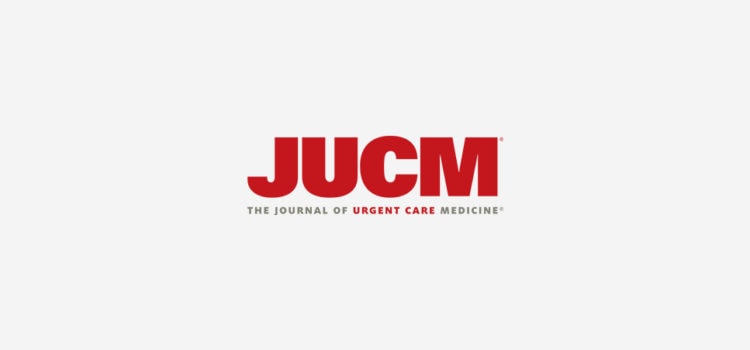The key question posed by the authors of an article published last month in JAMA Internal Medicine: How have patterns of care for low-acuity patients with acute conditions changed over time among a commercially insured population? The answer is, quite a lot—due largely (and much to the benefit of) urgent care. Working from 2008–2015 claims data supplied by Aetna, the researchers looked at utilization, inflation-adjusted price, and spending associated with approximately 20 million acute care …
Read MoreWarning: The Future of Patient Engagement May Require Straying Beyond Your Comfort Zone
Urgent care has faced many challenges since its inception—starting with trying to get healthcare consumers and insurers to understand what it has to offer that’s different from a traditional primary care practice or the emergency room. Through true market evolution—we’re talking Darwin, here—that hurdle has helped separate the wannabes from the real innovators. The latter came to grasp that a patient-friendly approach would be one obvious attribute that could keep waiting rooms full and good …
Read MoreUrgent Care Ownership: Corporations on the Rise, Physicians and Hospitals on the Decline
The urgent care industry—always revolutionary compared with other practice settings—is undergoing a revolution of its own. First, entrepreneurial physicians ruled the roost (recall the much-maligned and unfairly categorized “doc in a box”). Then, hospitals figured out they were missing the boat on the practice and financial benefits of the urgent care approach and began acquiring or building their own urgent care centers. As of 2016, though, corporate ownership is most prevalent, followed by physician and …
Read MoreOne More Look at Head Injury Presentations in Urgent Care
In this issue, we’ve offered an urgent care perspective on which patients presenting with head injury are most likely to require a scan, and shared insights into one urgent care center’s efforts to get a handle on which pediatric patients with head injury really need to be transferred to the emergency room. The fact is that the CT scan remains the standard for assessing for traumatic brain injury. The question that remains is, what’s next? …
Read More
When is On-Demand Care Most In-Demand?
The combination of convenience and quality is the hallmark of the urgent care industry. As time goes on and patients have an increasing array of options, however, “convenience” may be a relevant term (for example, virtual care is becoming more appealing to consumers and payers). Urgent care has taken notice and continues to expand its offerings, from the foundational walk-in visits for a sore throat to school physicals, return-to-work clearance, and support for cancer-related problems. …
Read MoreA Snapshot of Flu Vaccination Rates
The ongoing 2017–18 flu season is already one of the worst in recent memory. Recently released data from the Centers for Disease Control and Prevention may offer a clue as to one reason: Based on a complete study of the 2016–17 season, the CDC conjectures that influenza immunization rates may have plateaued. During that most recently completed season, just 46.8% of patients age 6 months or older got a flu shot—an increase of just 1.2% …
Read MoreFocusing on the Growth—and Healthcare Savings—of Urgent Care
We all know urgent care has been growing steadily, nearly since its inception. Hard data on the size of the marketplace can be hard to come by, though, as different sources apply varying definitions of what exactly constitutes an urgent care center. Similarly, we know proper utilization of urgent care services has tremendous potential to lower healthcare costs compared with visits to the emergency room. Again, though, the details can be hard to put a …
Read MoreThe Complementary Nature of Occupational Medicine and Urgent Care
As detailed in the first entry of our new occupational medicine series (Foundation of Occupational Medicine in the Urgent Care Setting, page 30), urgent care centers that offer occupational medicine services have reported the dual offerings are complementary in a way that helps balance the patient census and increase revenue. The data here, supplied by Dr. Max Lebow and reflecting Reliant Immediate Care in Los Angeles, illustrate that occ med visits tend to pick up …
Read MoreA Snapshot of Pediatric Urgent Care Operations
In October, we offered a glimpse at the operating hours of pediatric urgent care centers around the country. We also promised to share more on that growing segment of the urgent care marketplace—and this month we’re following through on that. The data below are drawn from a sample of 35 U.S. pediatric urgent care centers, and are part of a larger pool that we expect to be the subject of an expansive article in a …
Read MoreHow Patients Find a Healthcare Professional
Every business—universally, in every field—survives on its ability to draw the right customers. For healthcare professionals, that means patients. In this age of on-demand service and walk-in appointments, more than at any other time, providers are also called upon to be astute marketers who know how to help patients find them when they need care. Making the effort doesn’t always assure success, however. So, it may be helpful to know that there are new, independent …
Read More